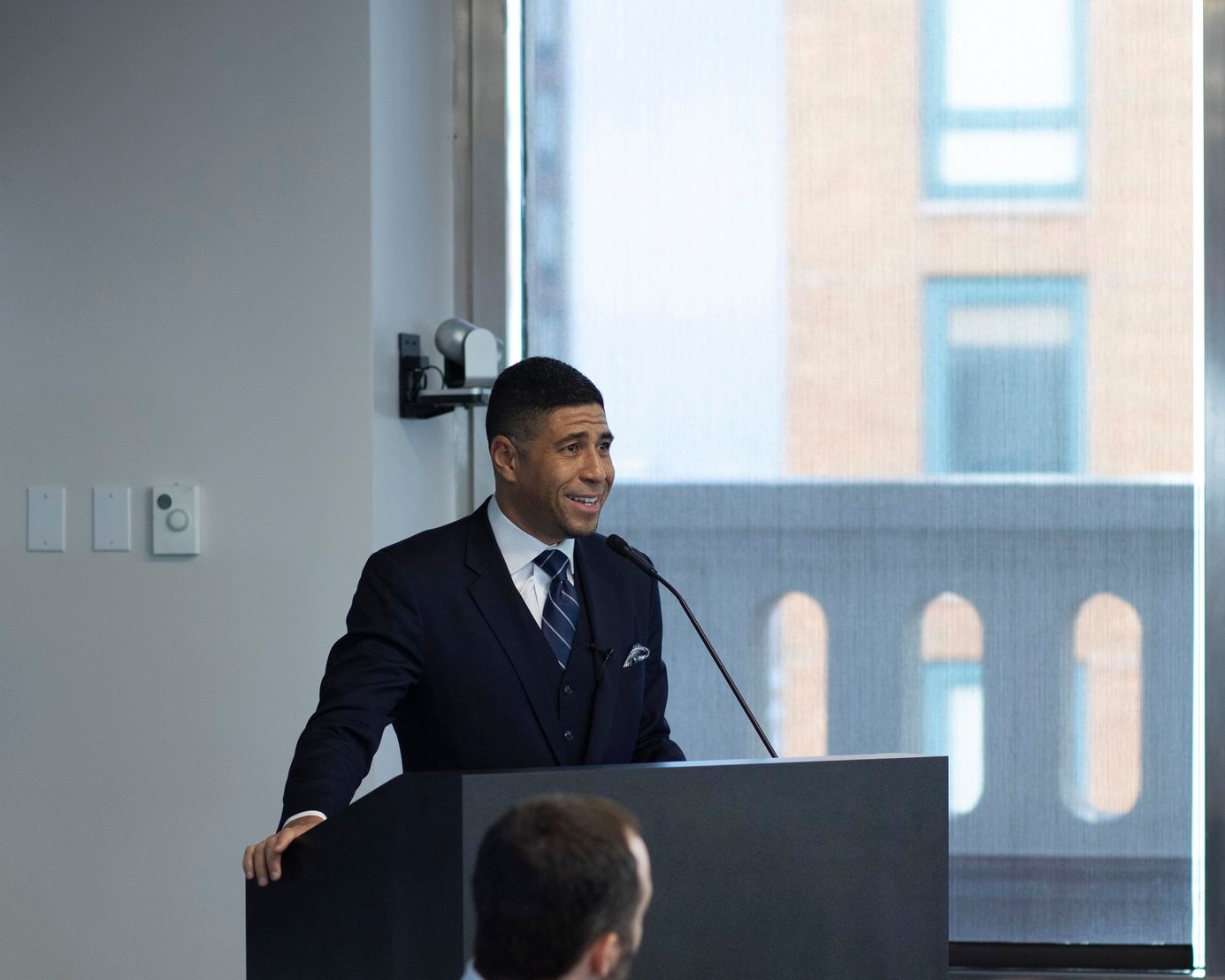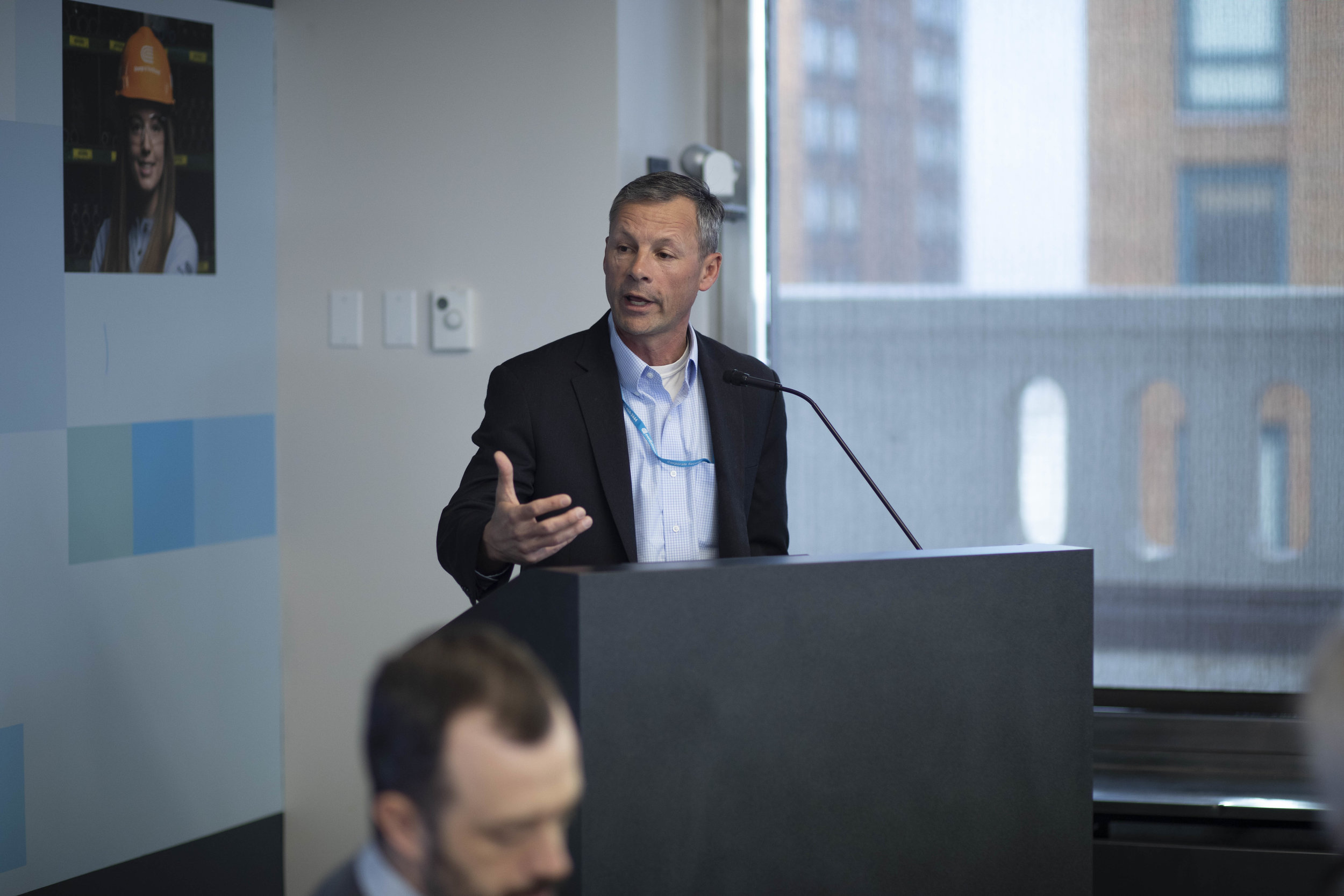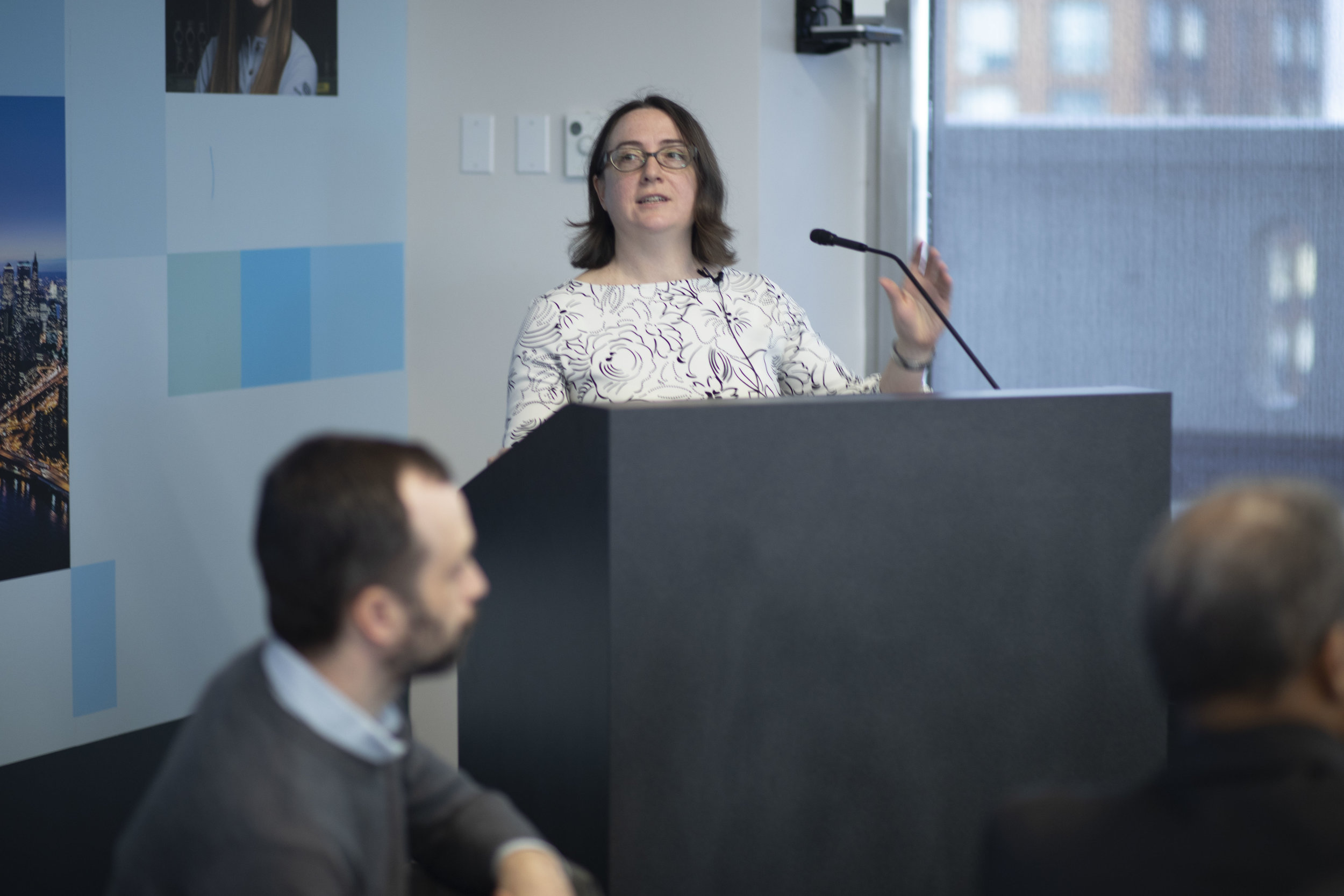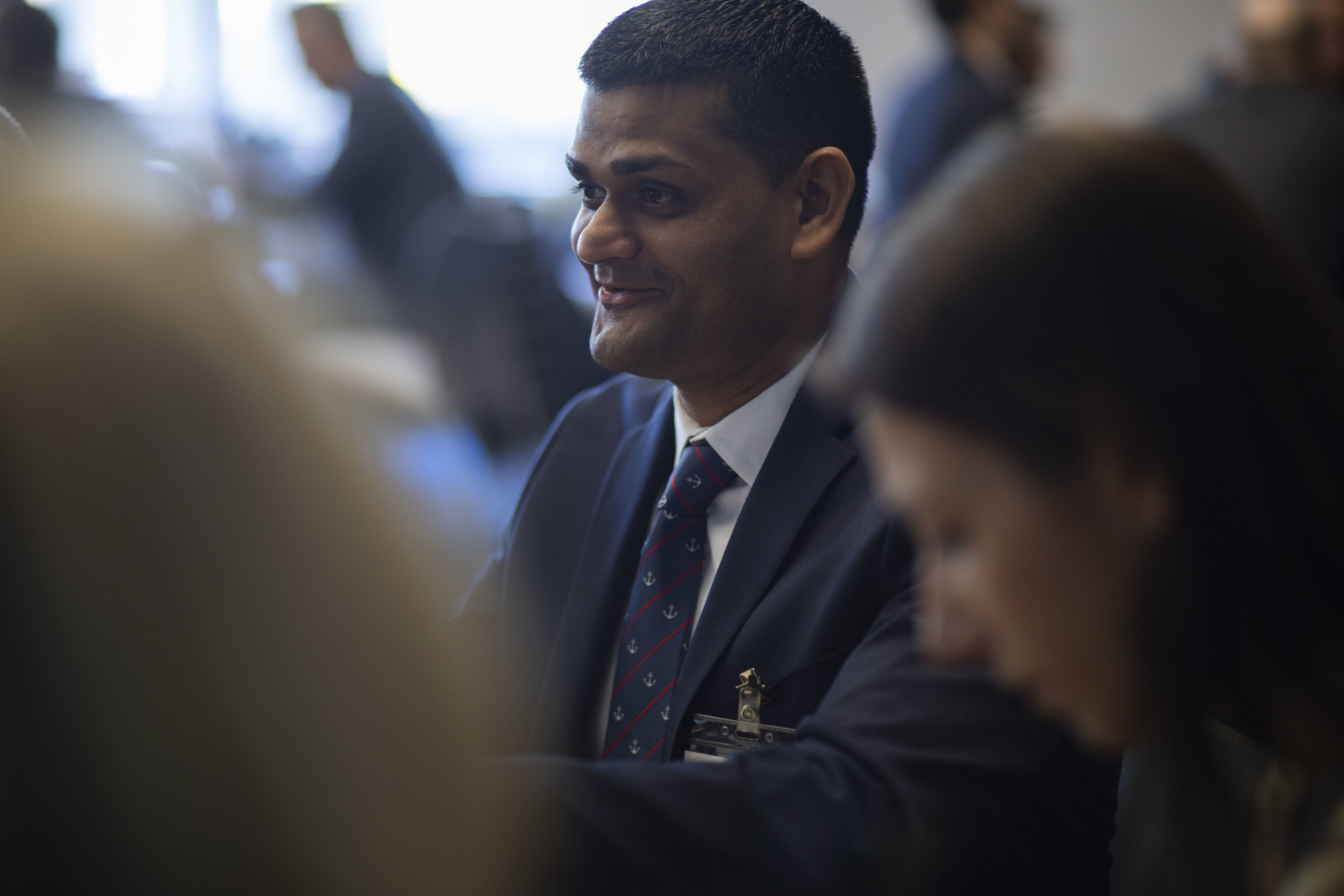- Isabella Suarez, AEG Fellow
Advanced Energy Group’s New York stakeholders convened at the Con Edison office on February 21, 2019 to discuss Resiliency, Critical Infrastructure, and Microgrids. HG Chissell, CEO of the Advanced Energy Group, welcomed stakeholders by noting the “collective brilliance” and diversity in the room, thanks to attendees from a wide range of sectors and institutions. He then presented the quarter’s problem statement:
Collectively identify a problem related to Resiliency, Critical Infrastructure and Microgrids that needs a near-term solution and requires collaboration.
After challenging the group to come up with a 12-month action plan that can be executed by next year’s Q1 event, HG invited Senior Vice President of Con Edison, Matthew Ketschke, to give his opening remarks.
Matt Ketschke shared the sentiment that the stakeholder process is vital in supporting New York’s resiliency efforts. Following Hurricane Sandy, billions of dollars were invested towards redesigning the utility system and segmenting the grid so areas could be preemptively shut down in cases of emergency; today, New York’s grid functions with 99.9% safety and reliability. With a changing climate and increasing climate uncertainty, the next challenge for the city is one of resilience, which should be tackled alongside the changing nature of industry jobs and utility functions. Ketschke highlighted that “a new utility business model must adjust to the new reality.” Technologies such as non-wire solutions allow more customer engagement, which changes consumer needs and behaviors, as well as shifts the customer role to that of a prospective energy producer. To this point, he discussed Con Edison’s success with the Brooklyn-Queens Demand Management (BQDM) Program, which engaged customers to become a part of the borough’s energy supply mix as suppliers, not just consumers. Con Edison learned that in deploying new technologies, the forward-looking planning criteria must provide long-term certainty for third parties to create business models around distributed energy resources (DER.) However, to become a truly viable business model for utilities, distributed assets require additional investments and regulatory protections. The city’s incredibly reliable underground resource networks and high voltage feeds allow for uninterrupted access to consumers, but they are not programmed for this new demand for bi-directional flow of energy. Ketschke believes that one of the biggest game changers are batteries; utilities must identify whether they should be contextualized as assets in distribution, capacity wholesale, energy supply, or all of the above. This opens questions around cost sharing and ways batteries could address the resiliency in vulnerable communities.
Susanne Des Roches, Infrastructure and Energy at the NYC Mayor's Office of Resiliency
Susanne DesRoches, Deputy Director of Infrastructure and Energy at the NYC Mayor's Office of Resiliency, echoed this issue of inclusivity. Though the New York grid serves some of the most affluent people in the world, it also operates in neighborhoods with high rates of poverty. Increasing resilience and building critical infrastructure cannot be undertaken at the expense of raising electricity prices. DesRoches focused her presentation on the OneNYC Energy Policy Goals, saying these were organized under principles for a growing, thriving, just, equitable, resilient, and sustainable city. Part and parcel of the NYC 80x50 goal is a low carbon grid, which is challenged with Indian Point going offline on top of a generally aging generation and transmission fleet. DesRoches argued for two main infrastructure solutions: new transmission to connect with offshore wind and upstate resources, and Distributed Energy Resources - such as the installation of 1000 MW of solar PV by 2030, 100 MWh of storage by 2020, and community-scale deployments for green supply and overall demand reduction. Because more and more infrastructure will be built in the coming years, her office put together the Climate Resiliency Design Guidelines to engage more stakeholders around climate change challenges; she previously shared her work on this with AEG. DesRoches argued that a problem that required collaboration and needs a near-term solution is
“Holistic transmission planning.”
Steve Martino, Vice President, MEP Division Leader, Savin Engineers
Steve Martino, Vice President of the MEP Division Leader at Savin Engineers, followed with a “perspective from the trenches.” He stated that learning from the challenges of projects on the ground will allow other stakeholders to scale more effectively and craft more appropriate policies. He shared the group’s success with the JFK Airport Advanced Metering Infrastructure Upgrade, a project tackled under contract by Dynamic US. The goal of the project was to improve JFK’s meter-reading capability, which was expensive, large in scope and labor intensive due to a lack of existing meters and data. In the end, the application of modern technologies like smart meters and equipment provided operational and fiscal improvements that increased accessibility and centralized data storage. Martino’s factors for success were the critical role of an initial scope that was comprehensively defined by all stakeholders, effective contracting mechanisms like the NYPA Design Build, and collaboration and trust. He identified the following problem related to resiliency and critical infrastructure:
“Collaboration in creating a contracting and delivery mechanism that promotes true teamwork and trust and allows teams to be assigned to essential work.”
Mohamed Kamaludeen, Manager for Distribution Planning, Con Edison
Mohamed Kamaludeen, the Manager for Distribution Planning at Con Edison, argued the following as a solvable near-term problem:
How to meet “the State’s aggressive storage target of 1,500 MW by 2025 through various stakeholders and deployment models.”
He expounded on Energy Storage Goals from FERC and NY Public Service Commission, and pointed out that increased funding from New York State will accelerate the market learning curve, drive down costs, and speed up deployment. Kamaludeen presented Con Edison’s two storage models to advance policy goals and support resilience. The first is a rate-case distribution system for a total of 31.5 MW in service territory directly connected to the distribution system. The second is a make-ready model proposal using 3rd party-owned Electric Vehicles (EV.) He warned that energy storage goals involving levying soft costs and that customer engagement should be considered as non-wire solutions.
Charles Hermann, the New York Power Authority’s Senior Engineer for Energy Services Product Development, began with his problem statement:
Charles Hermann, Senior Engineer for Energy Services Product Development, New York Power Authority
A critical problem related to Resiliency, Critical Infrastructure, and Microgrids that needs a near-term solution and requires collaboration is a unified solar and storage permitting process.
He outlined the timeline and requirements of the separate processes, adding that they are unnecessary and unable to adjust to novel technologies; he pointed out that batteries are not even included in the current constructions code. Despite the relative newness of renewable and distribution storage facilities, increasing resilience should not just occur at the feeder level. He argued that standardizing data for accessibility would be easier with a single standardized permitting process because it would ease the process and leapfrog storage system builds. Before opening the floor for discussion, he remarked that if complete electrification is the future, then retrofitting infrastructure and changing the public’s perception and consumption of electricity is crucial.
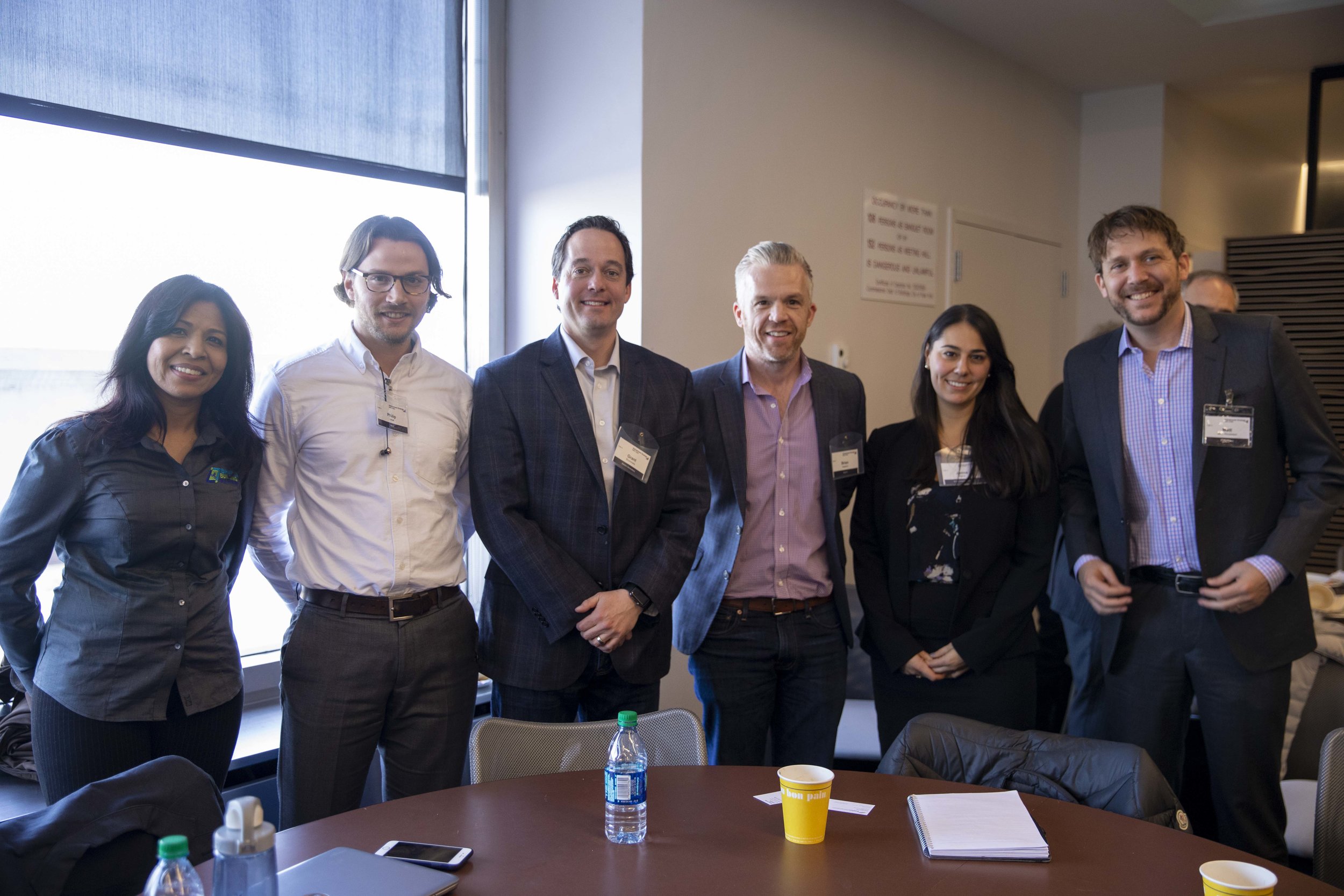
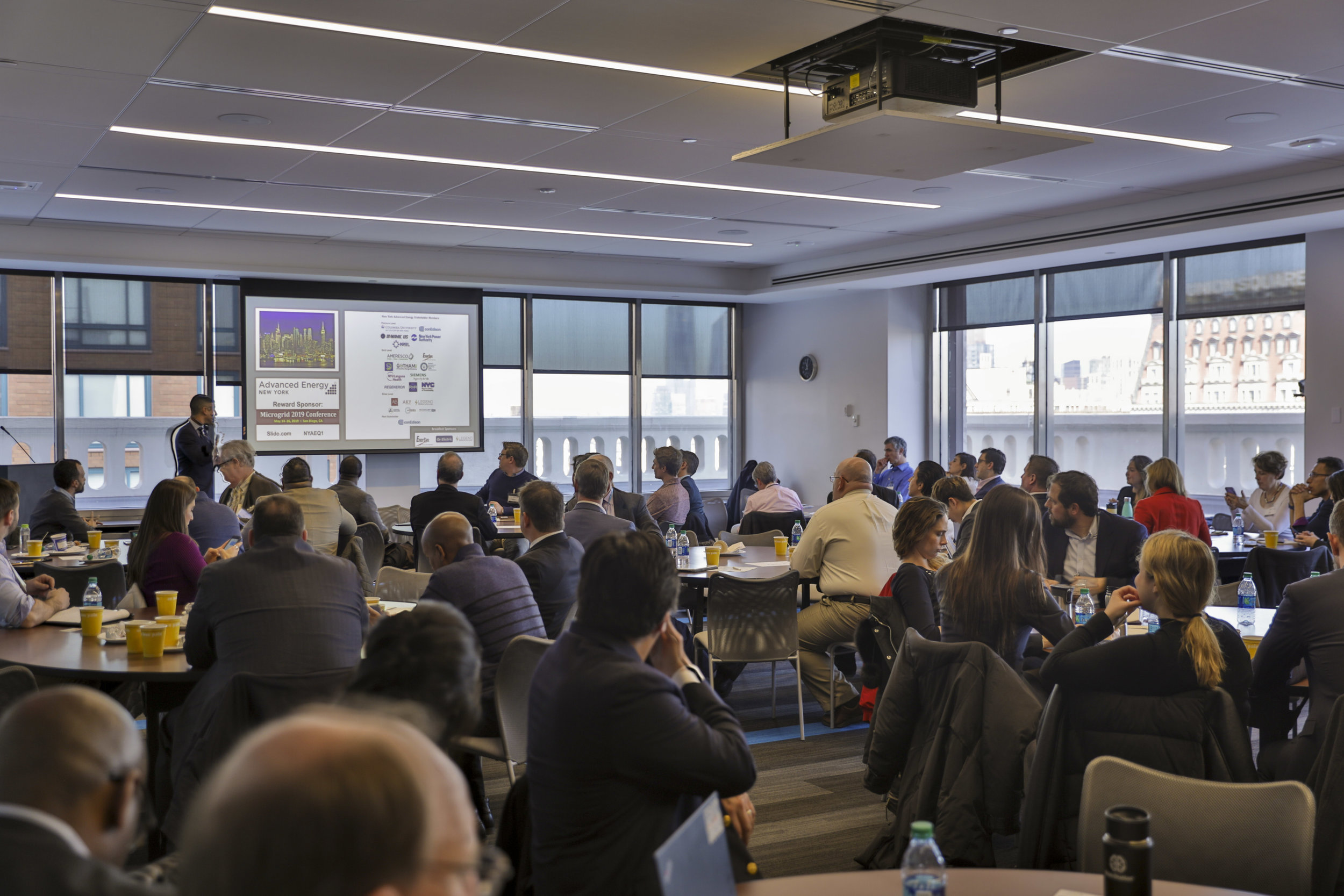
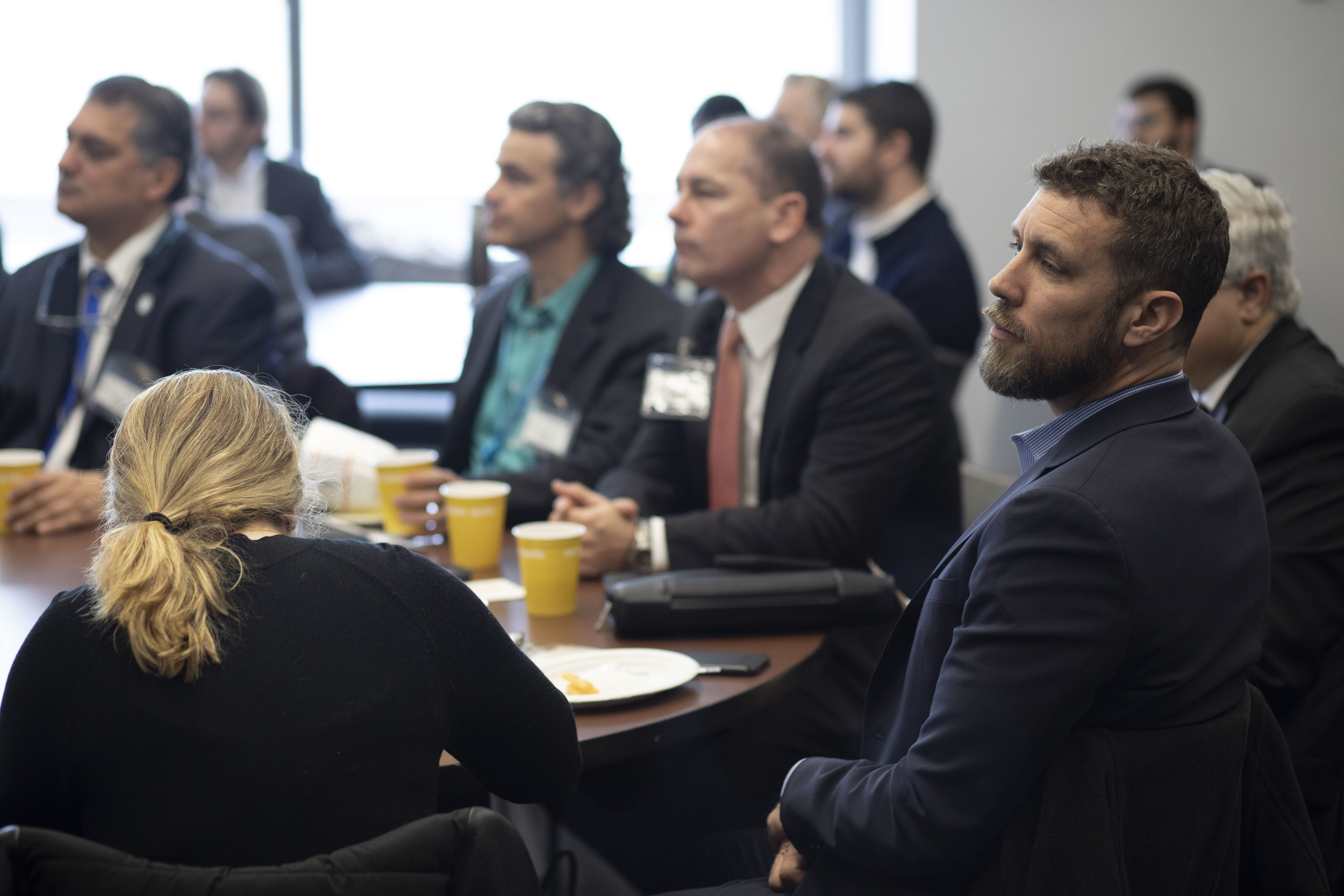
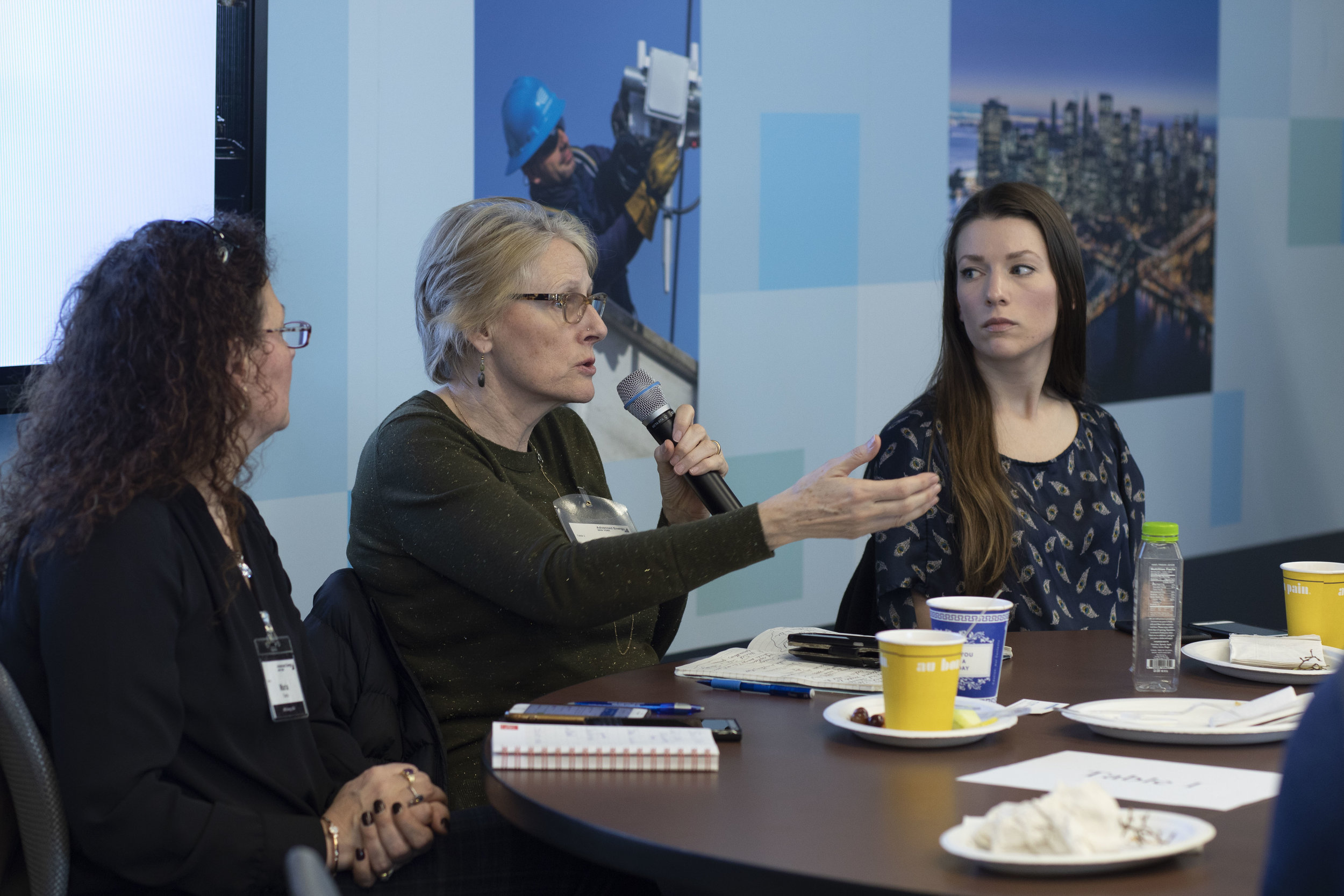
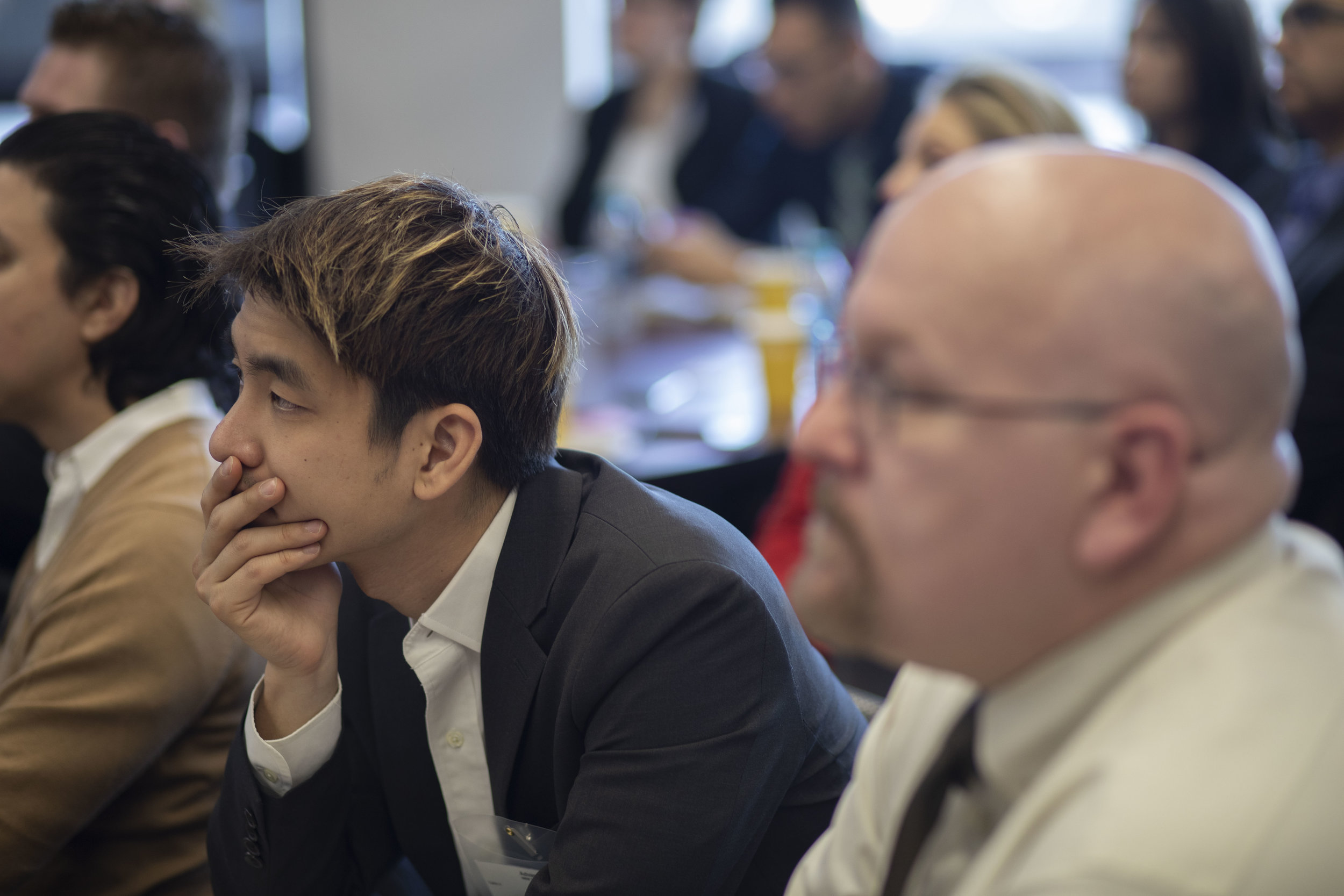

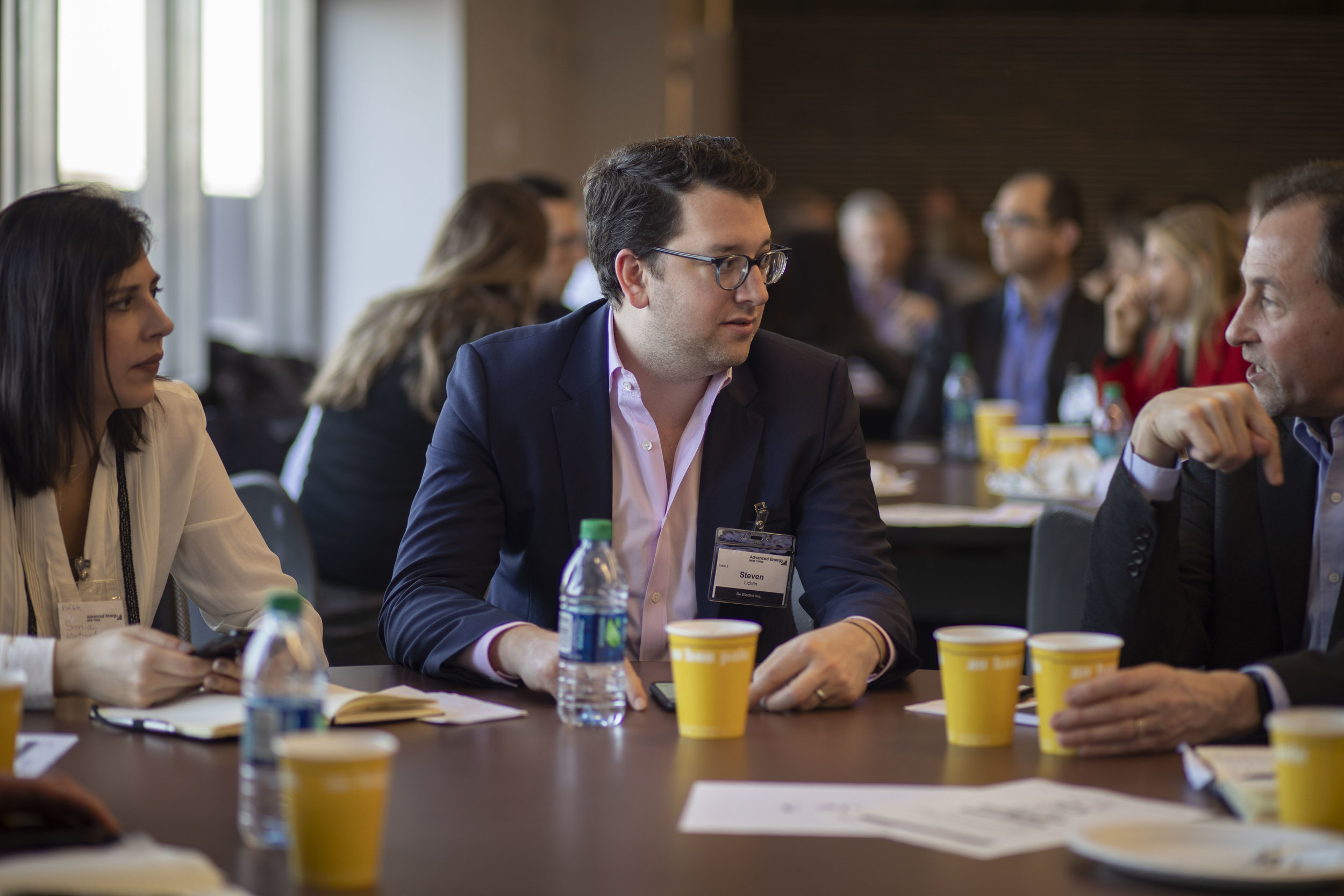
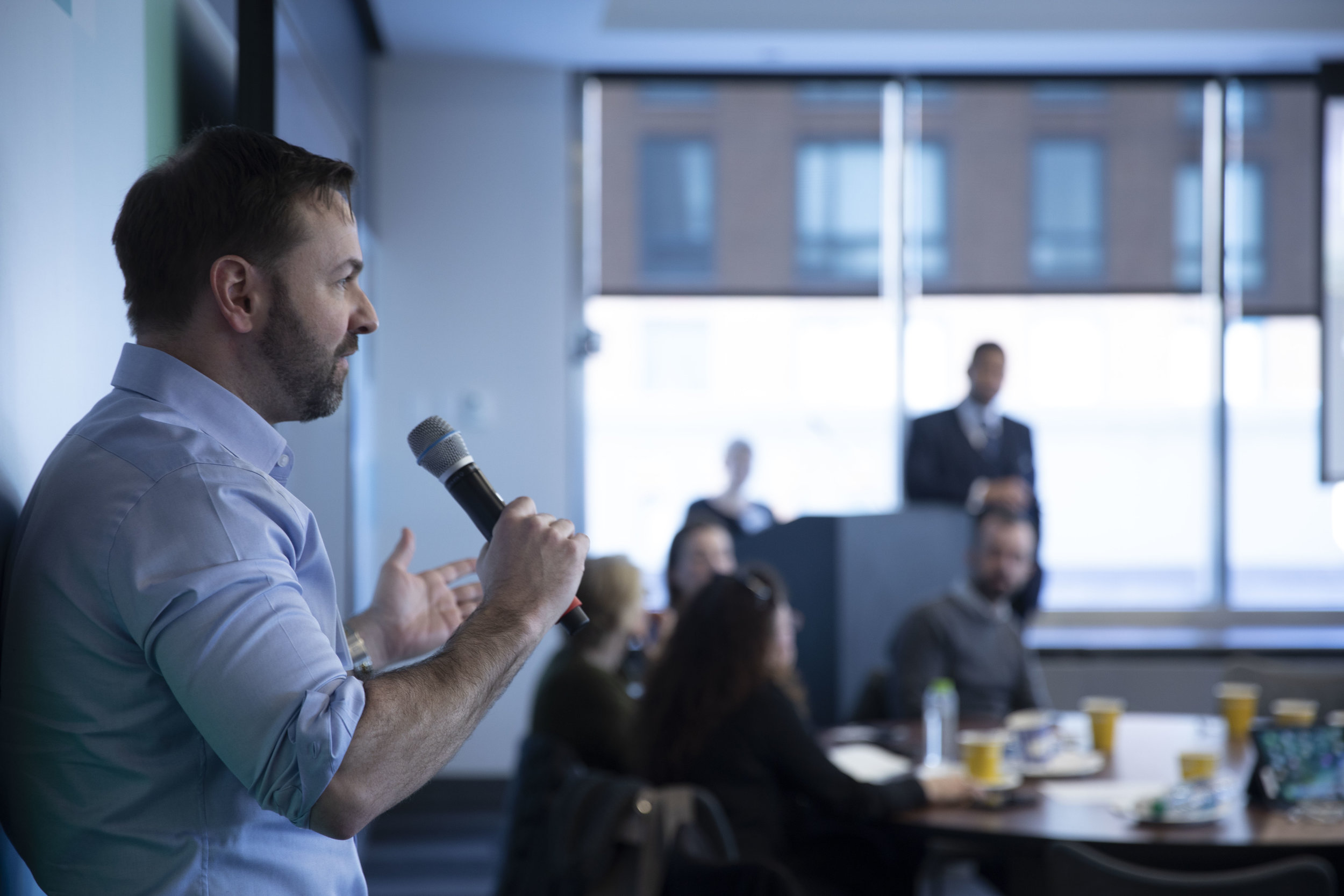
Of the four crucial problem statements, the morning’s stakeholders chose to unpack Mo Kamaludeen’s challenge to “identify the best stakeholders and deployment models for near-term action to meet the State’s aggressive storage target of 1,500 MW by 2025.”
After all 10 tables discussed amongst themselves, they proposed actions to the larger group. Table 9’s 12-Month Action Plan won the challenge:
Work towards the standardization of the permitting process and incentive structure by achieving the following milestones, which will be presented at next year’s Q1 Breakfast:
Quarter 1: Organizing a coalition of stakeholders
Quarter 2: Evaluating the city and state building deployments
Quarter 3: Writing a plan
The event ended with Philip Jonat, Engineer at WSP, offering to head the Task Force; over a dozen other attendees have already offered their support to achieve this project. Advanced Energy Group looks forward to checking in on their progress at future events.
Our next event, New York’s Q2 Stakeholder Series, will cover the topic of Smart Buildings & Grid Modernization and will be held on June 19 and 20, 2019. Non-member registration is now available.
Advanced Energy Group is a stakeholder member-supported organization committed to developing and delivering advanced energy policies and solutions in key cities. Stakeholder sessions are by invitation only. For details of our programming please visit:
Event Calendar | Podcasts | Videos | LinkedIn | Twitter

